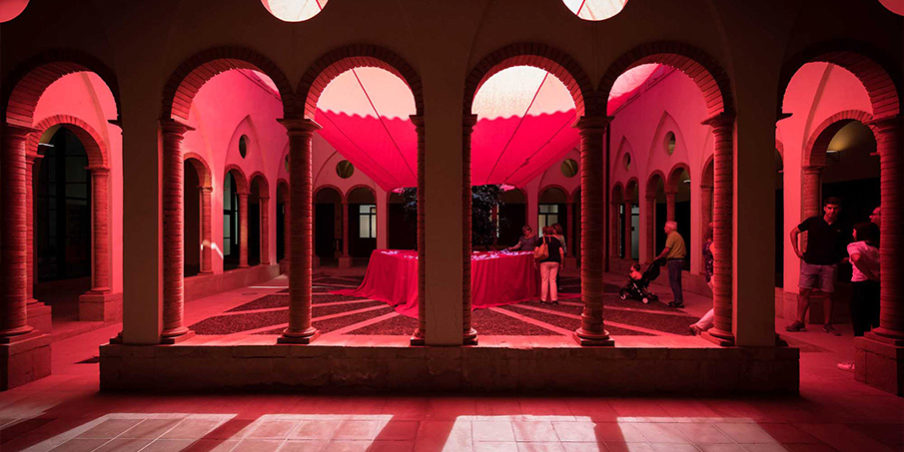Impassium
Emotion, euphoria, agitation, delirium, enthusiasm, wonder: the roads that lead to the fulfilment of our passions are always a rollercoaster of sensations, but it is determination and the passion itself that guides us unconditionally, with unlimited impetus, to achieve our goals and our deepest desires. However, the system and its gears sometimes do not respect the times required and act as an obstacle that prevents us from reaching our objectives. It is then when we become frustrated, lose our enthusiasm and our passions fade into oblivion.
In our lands, as in the majority of Mediterranean buildings, courtyards are an essential element that forms part of our heritage. In Roman times, the courtyard was perceived as a place for living, talking and reflecting. Two elements were of primary importance, the Compluvium, the space open to the sky at the centre of the courtyard that allowed the rain in, and the Impluvium, the element which collected the rainwater. The work proposed by the author is located at the heart of the courtyard, with a reference to the past by reinterpreting the basic functions of courtyards and converting the space into an “Impassium”, an impluvium of passions.
The ground floor is covered by a large red cloth suspended in the air with an opening in the form of an oculus in the centre. In this way the space is bathed in red, converting it into a place for reflection and introspection for the viewer. On the first floor visitors can write their true passion on a piece of paper and throw it onto the cloth cover for it to be eventually collected through the oculus in the Impassium, thus sealing a pact. This is because “Impassium”, as well as being an ephemeral work, is a sort of pact or commitment to ourselves, to our childhood self who dreamed of touching the sky. A commitment to remind ourselves of what we are passionate about, of what arouses our anger and makes us stand and fight, because if our hopes are eternal, so will be our passions.
Adrián Sifres


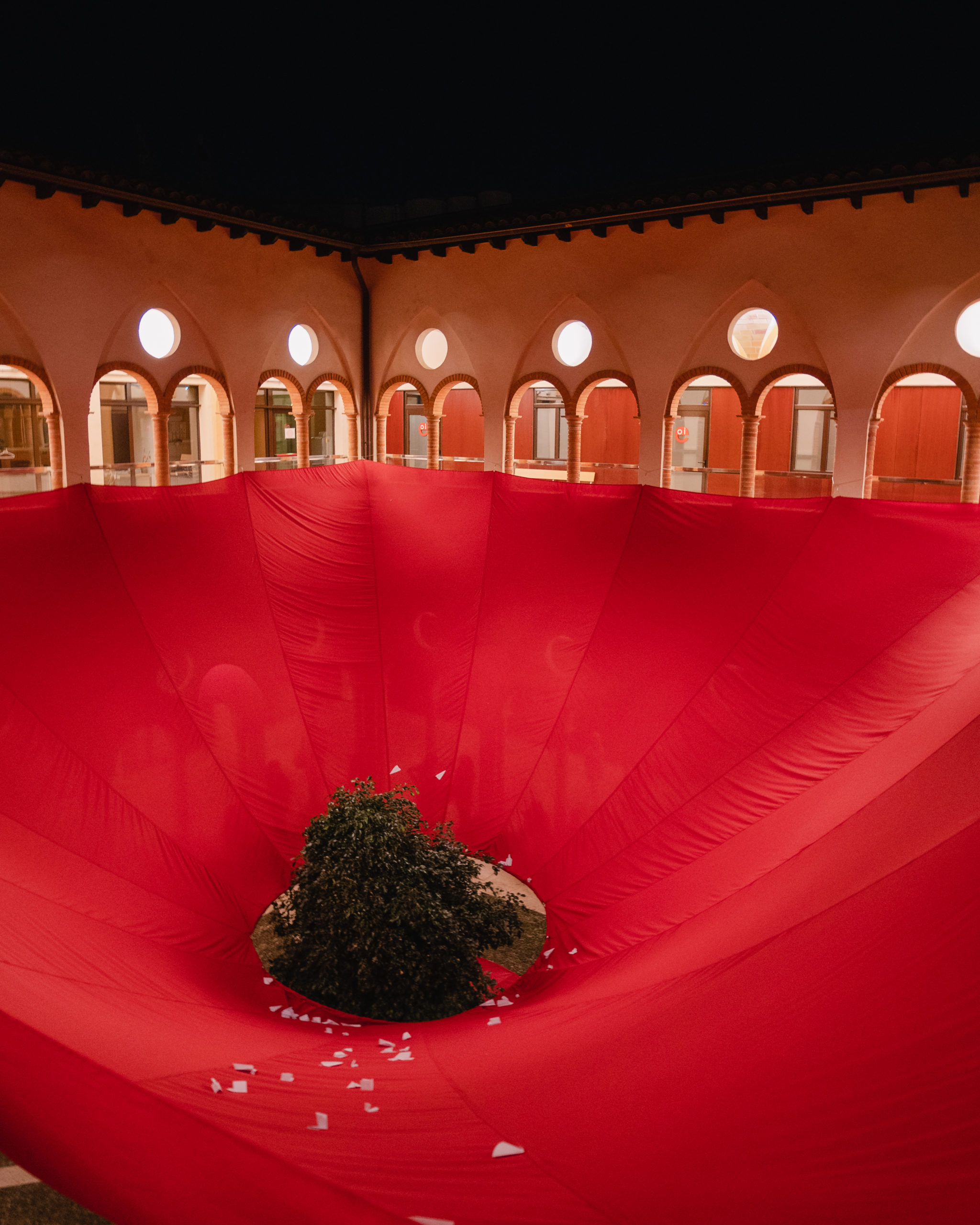
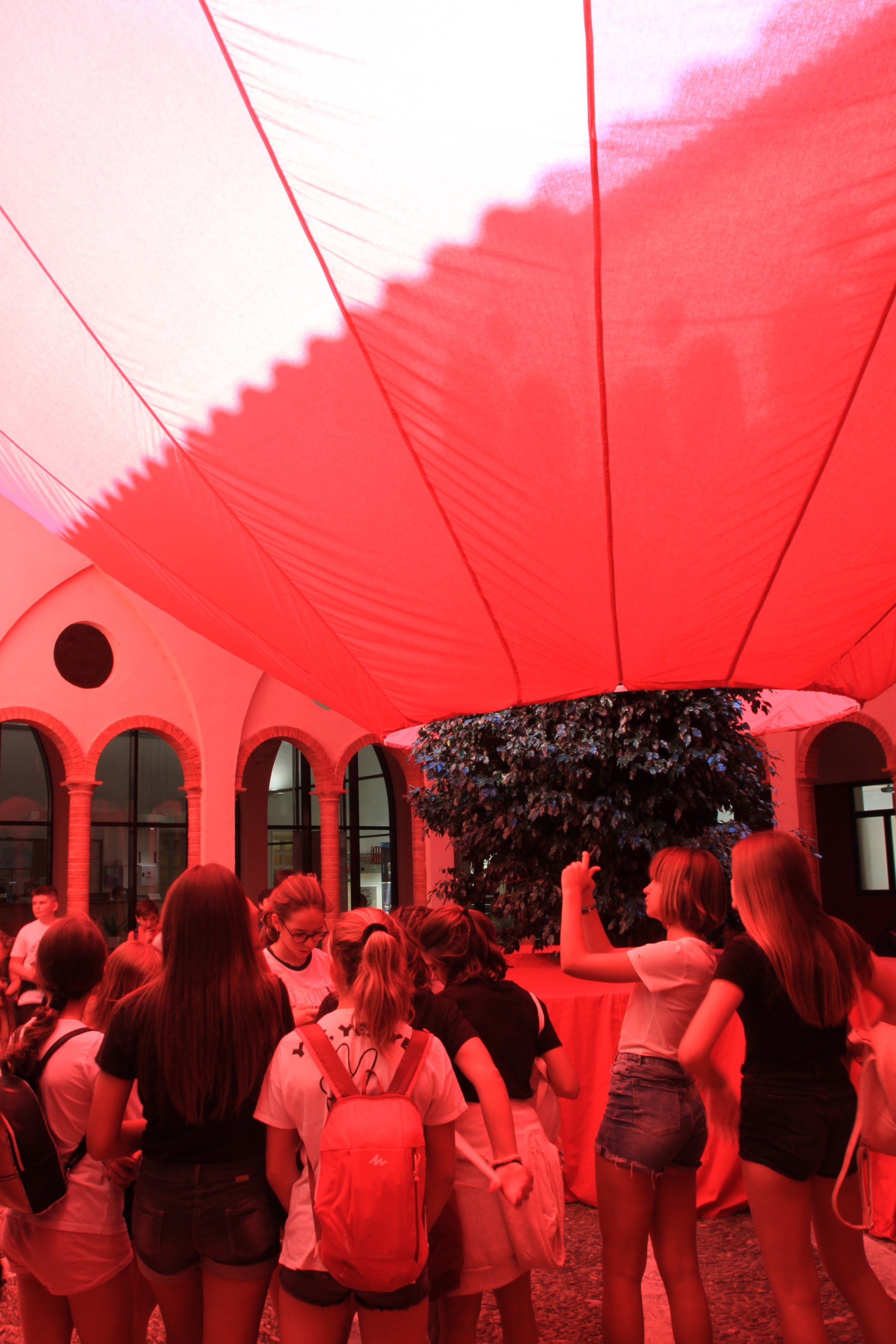

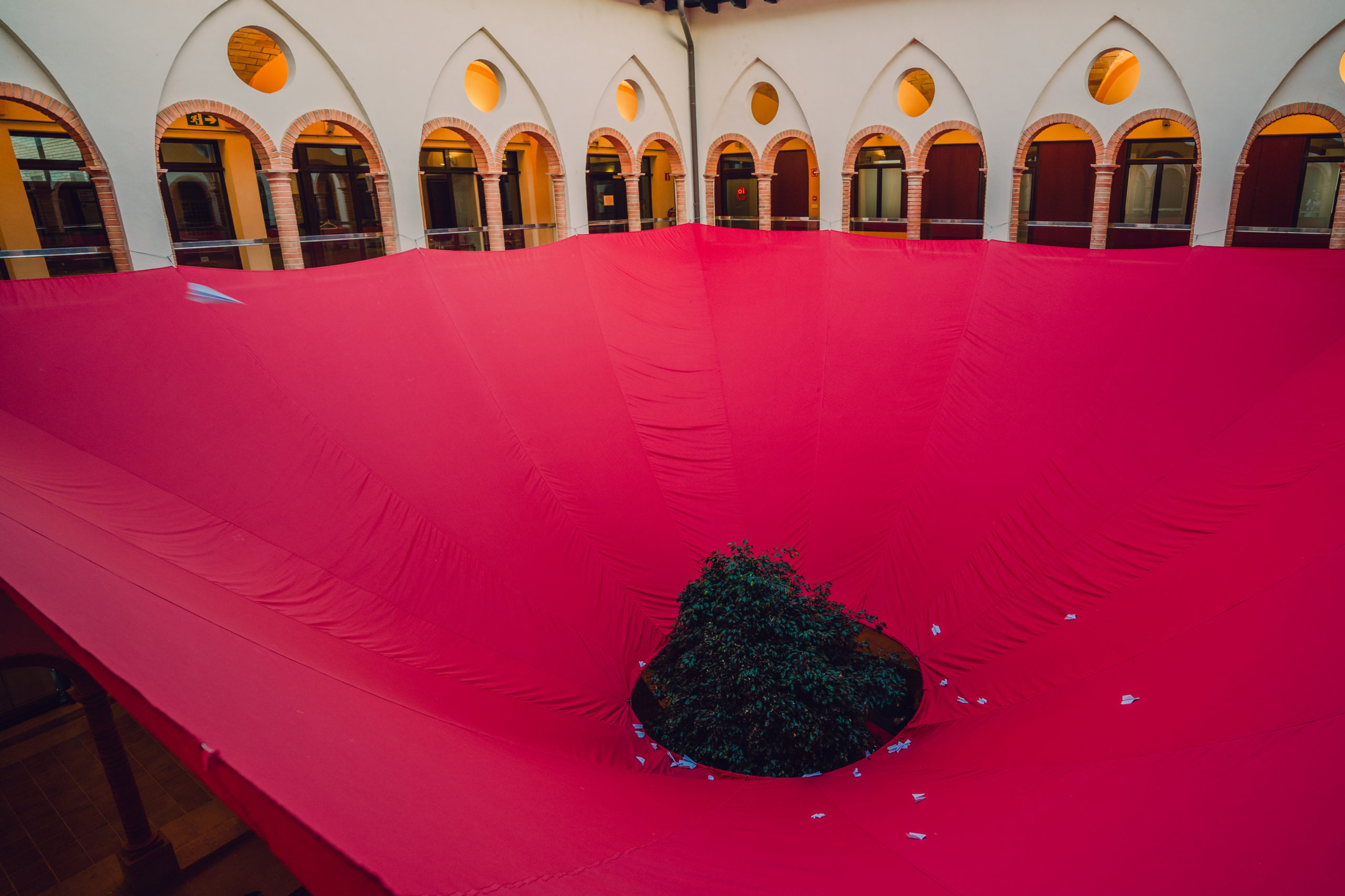
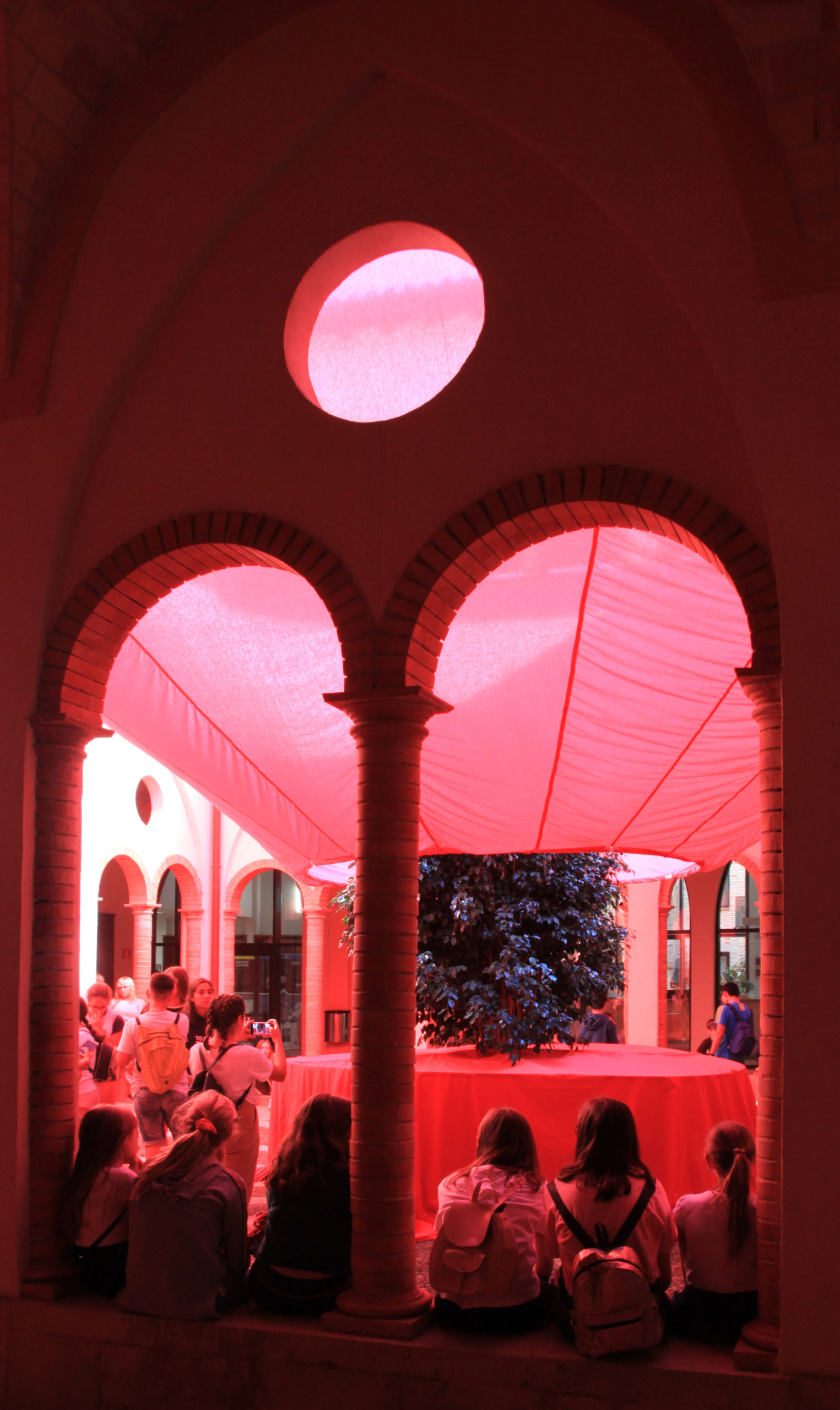
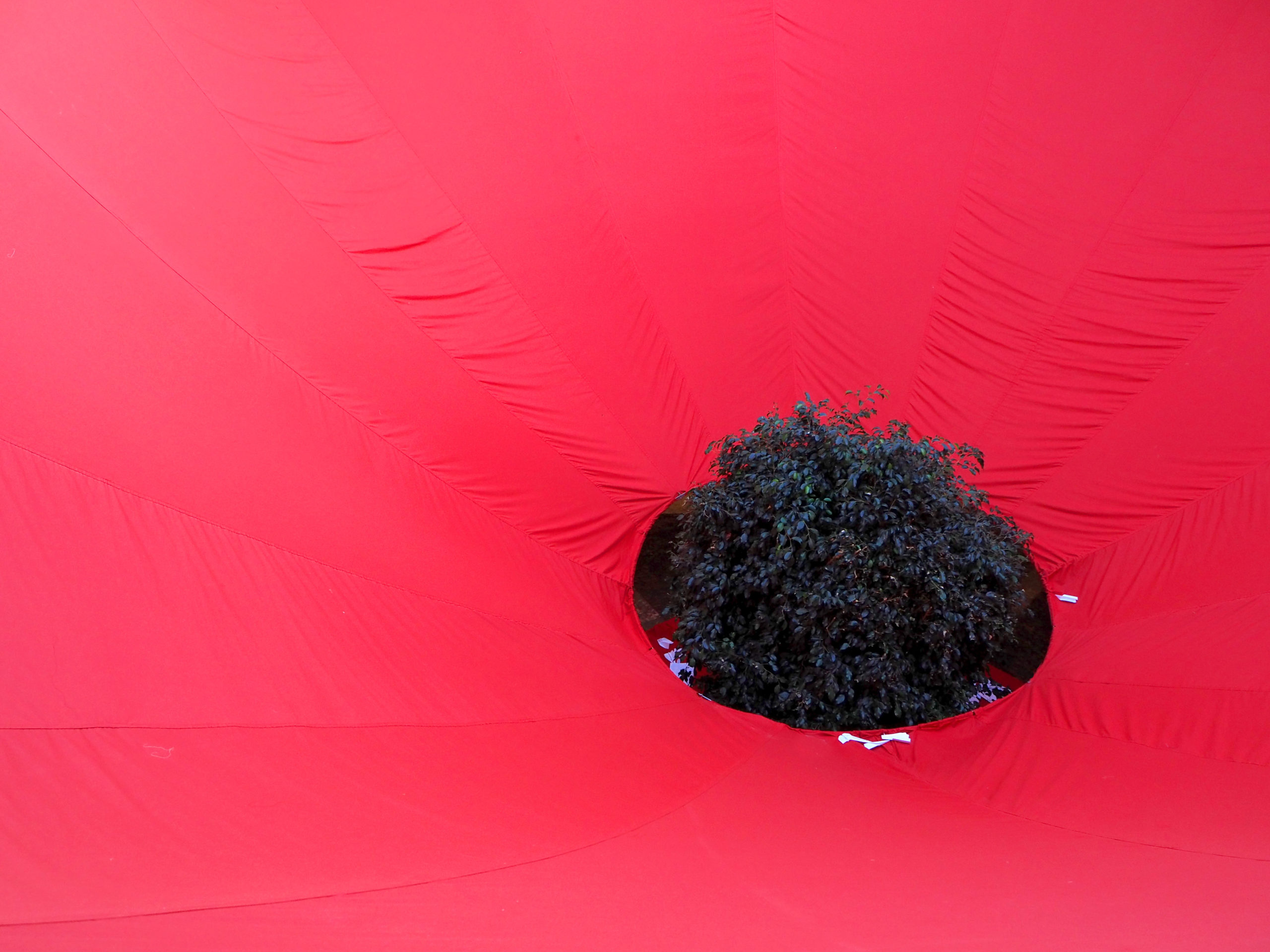
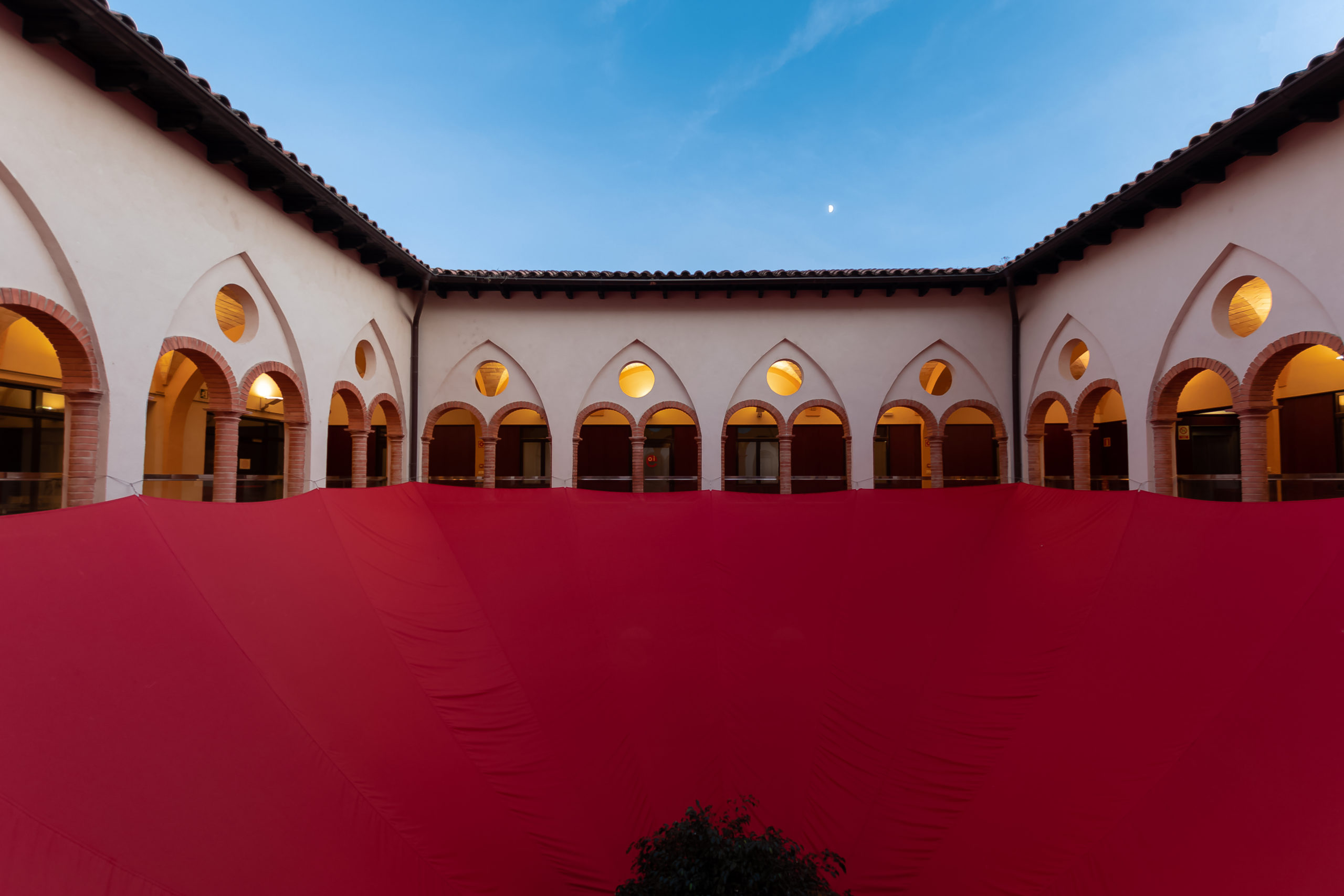
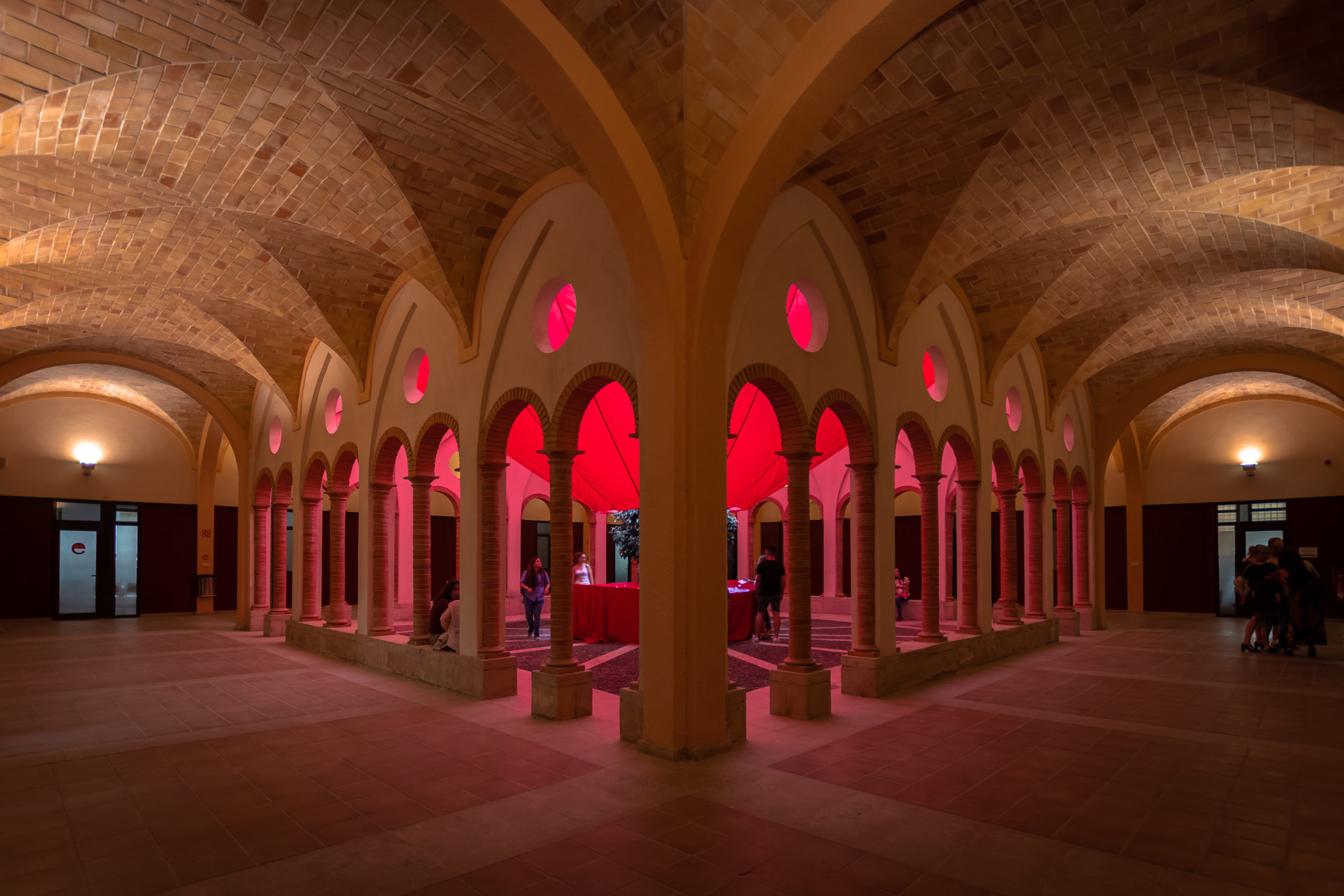
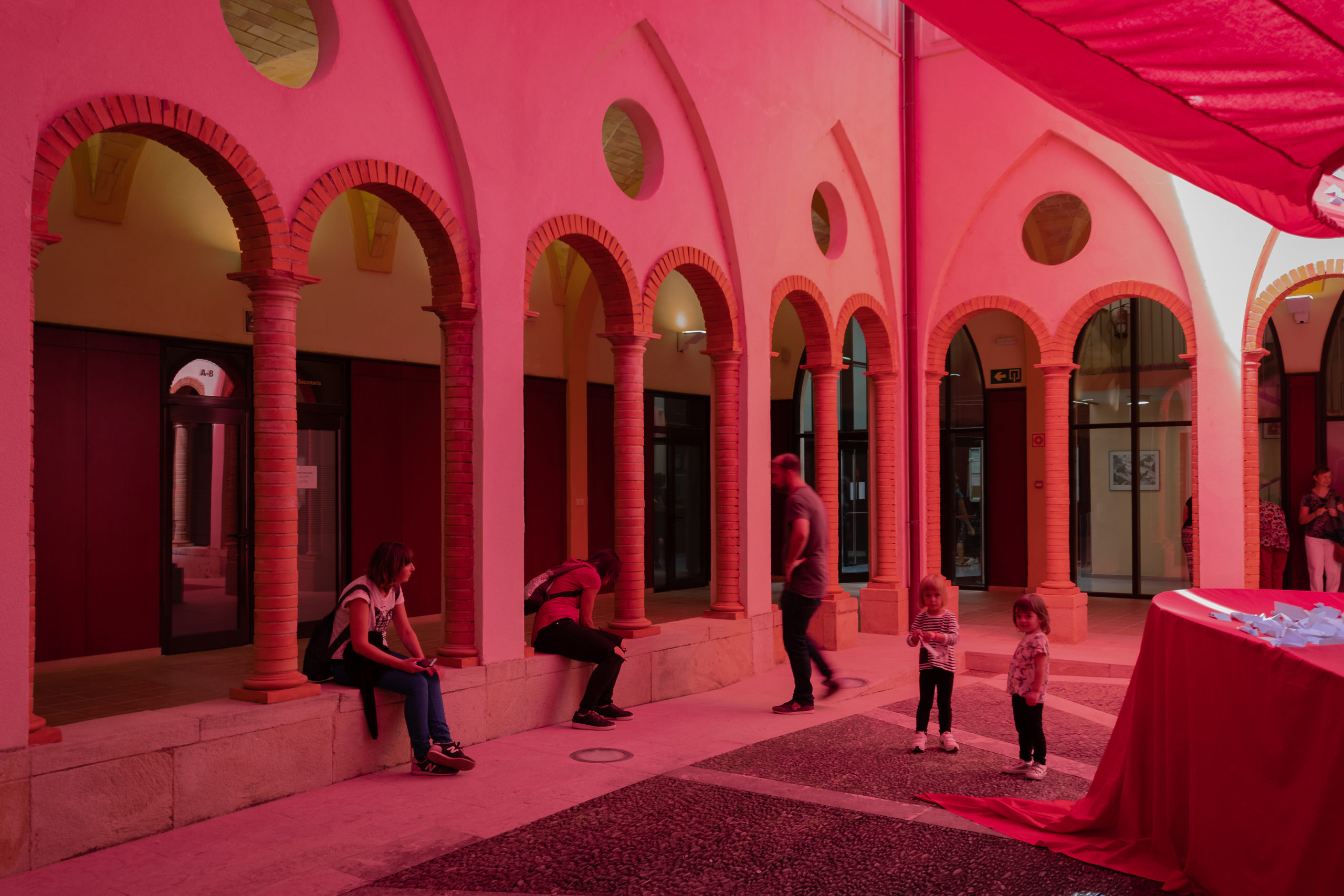
THE AUTHORS
Adrián Sifres qualified as an architect from the Valencia School of Architecture. He completed his training at the FAUP (University of Porto’s School of Architecture) and afterwards worked in the Portuguese studio Menos és Mais Arquitectos. During this time, he collaborated with various national and international projects as well as in the work created by the same studio for the 15th Venice Biennale of Architecture. After some years in Porto, Adrián returned to Valencia where he now works as an architect.
Using architecture as a tool for change, his projects are based on converting the weaknesses or deficiencies that a place has into its potential virtues. Concern for the environment, for what was there before, and the importance of the role of architecture in keeping the essence and the identity of a place are the rules that guide each and every one of his projects.
